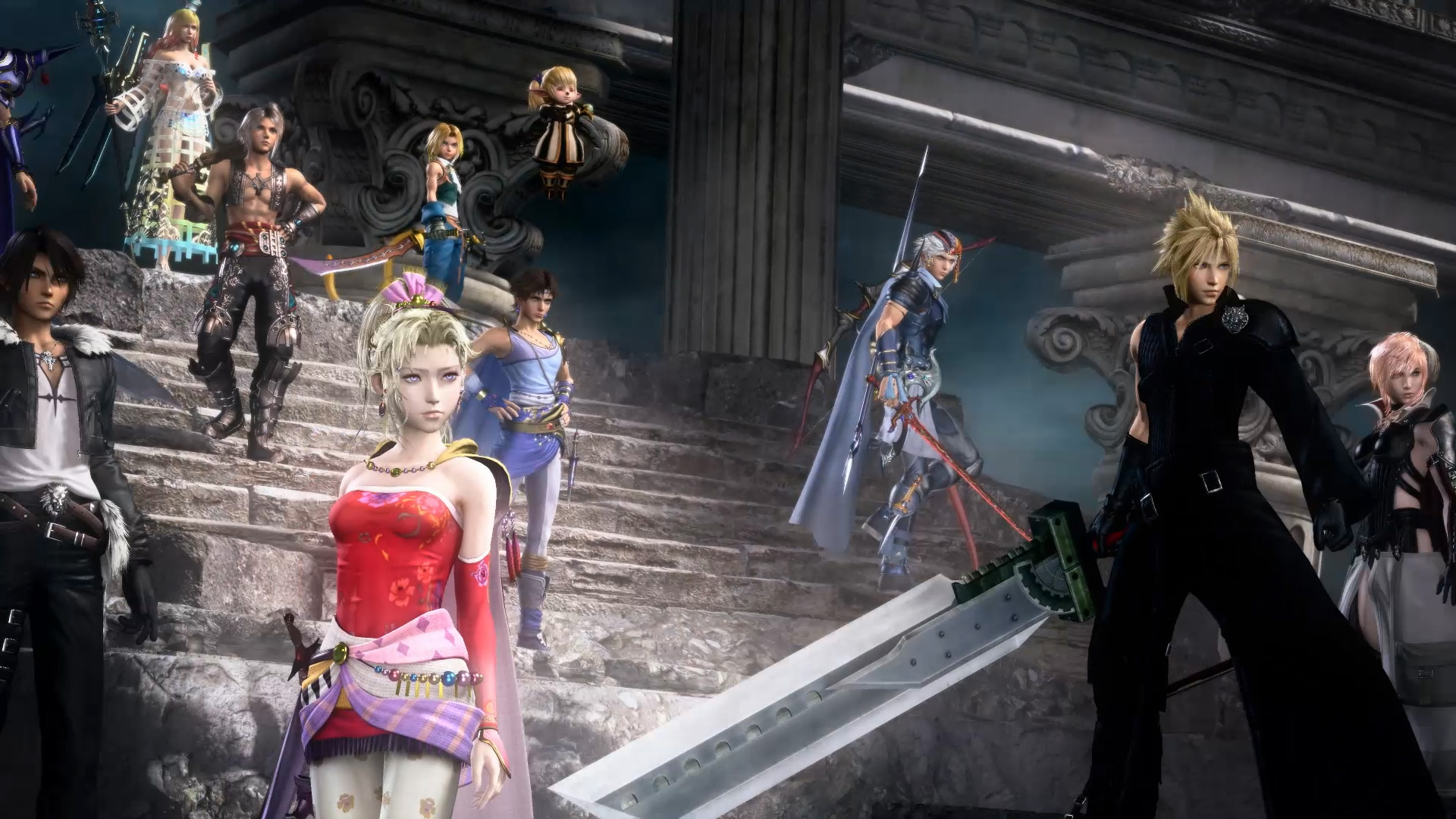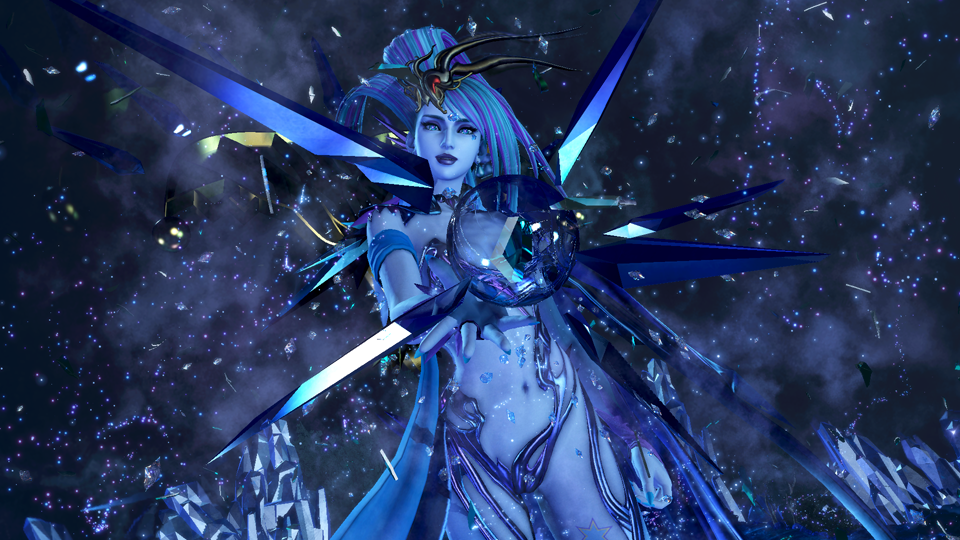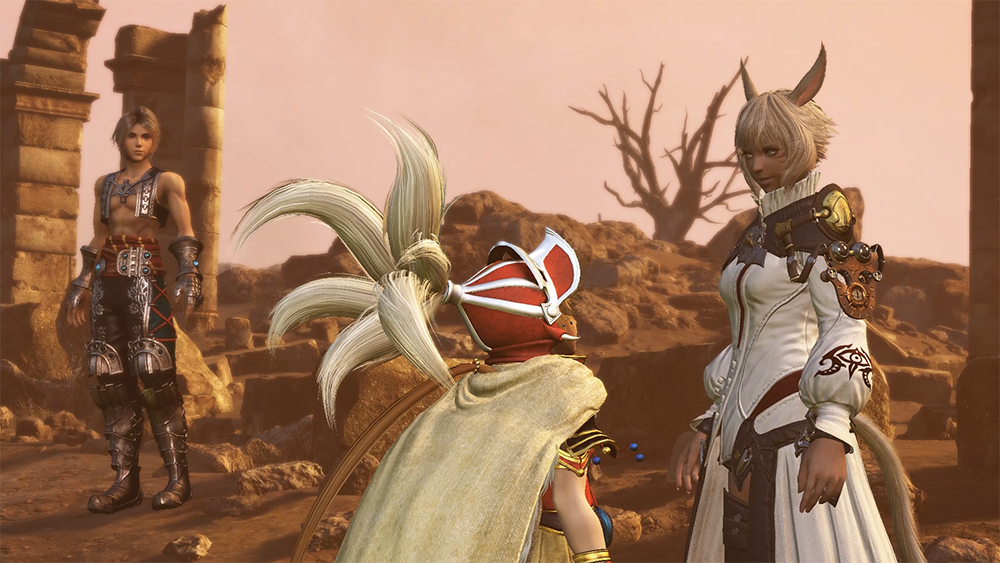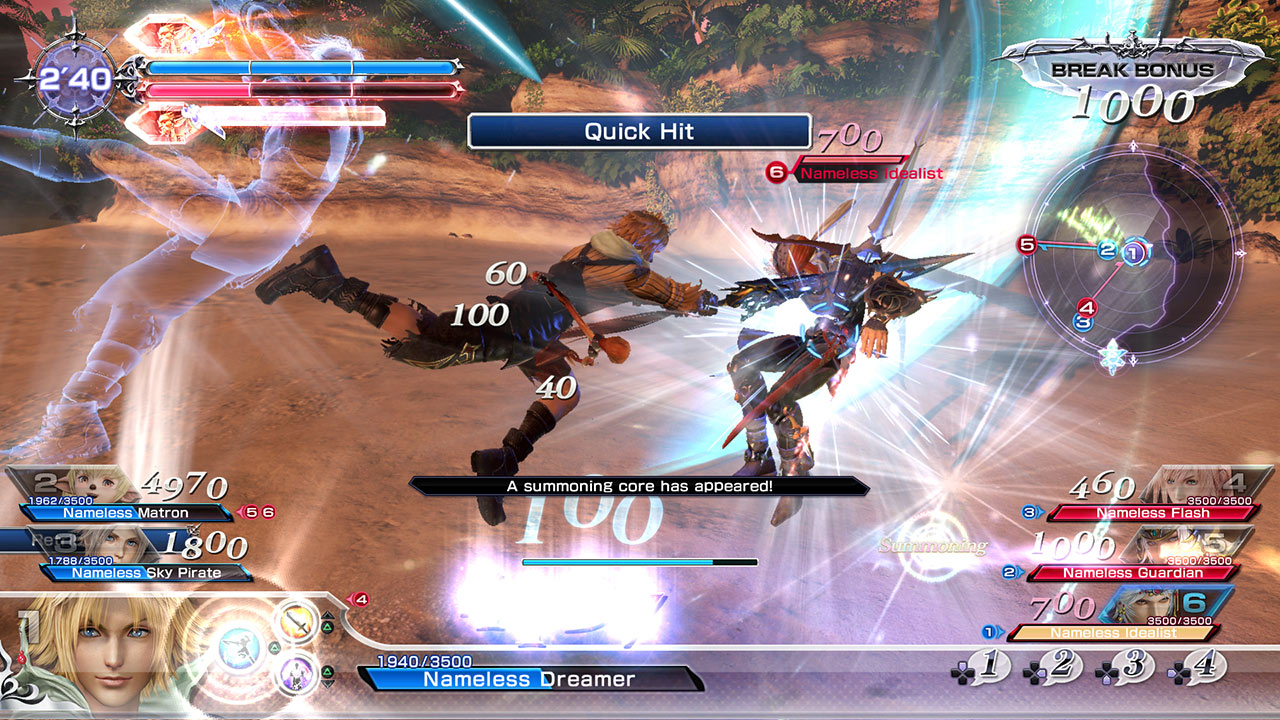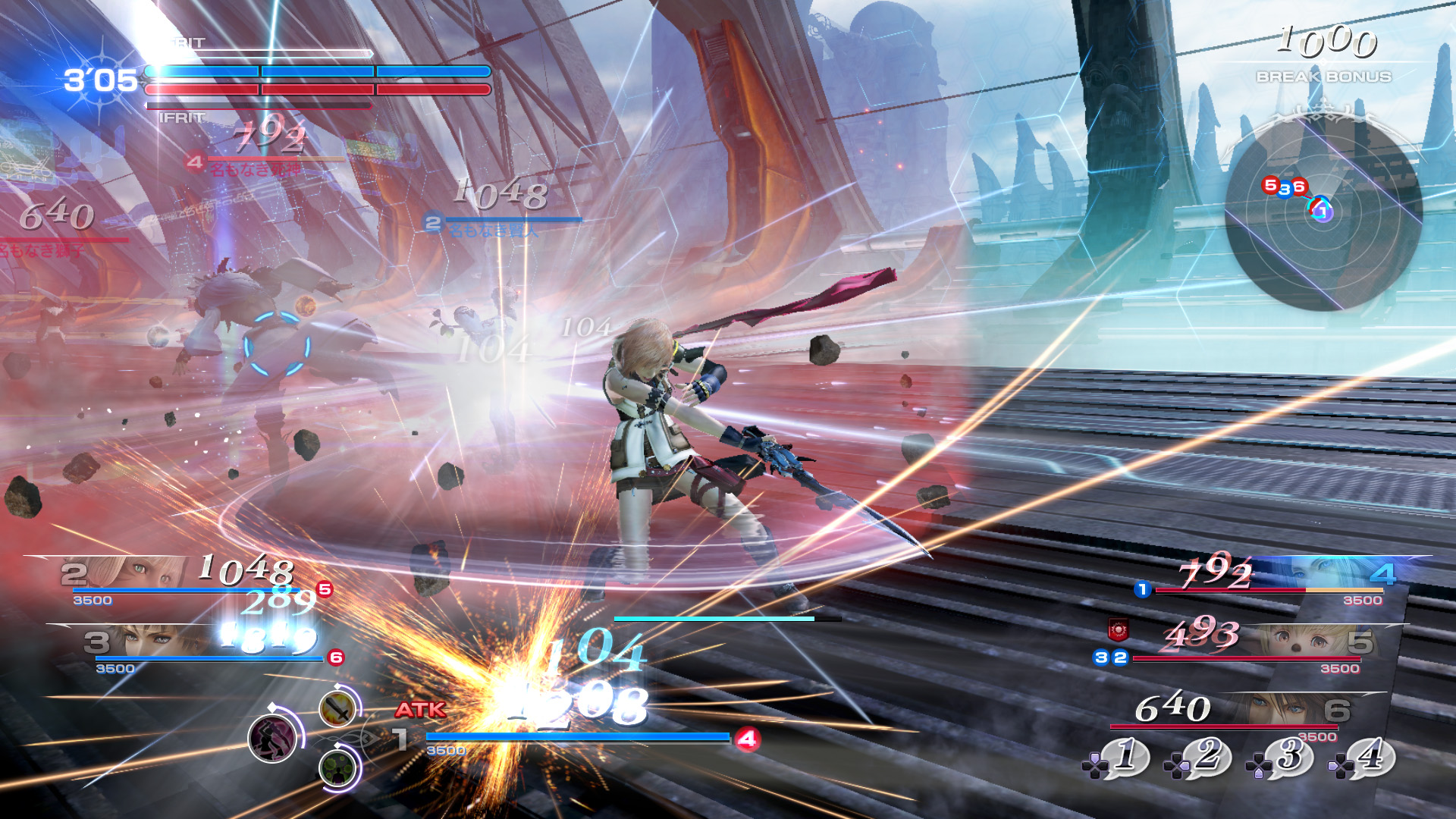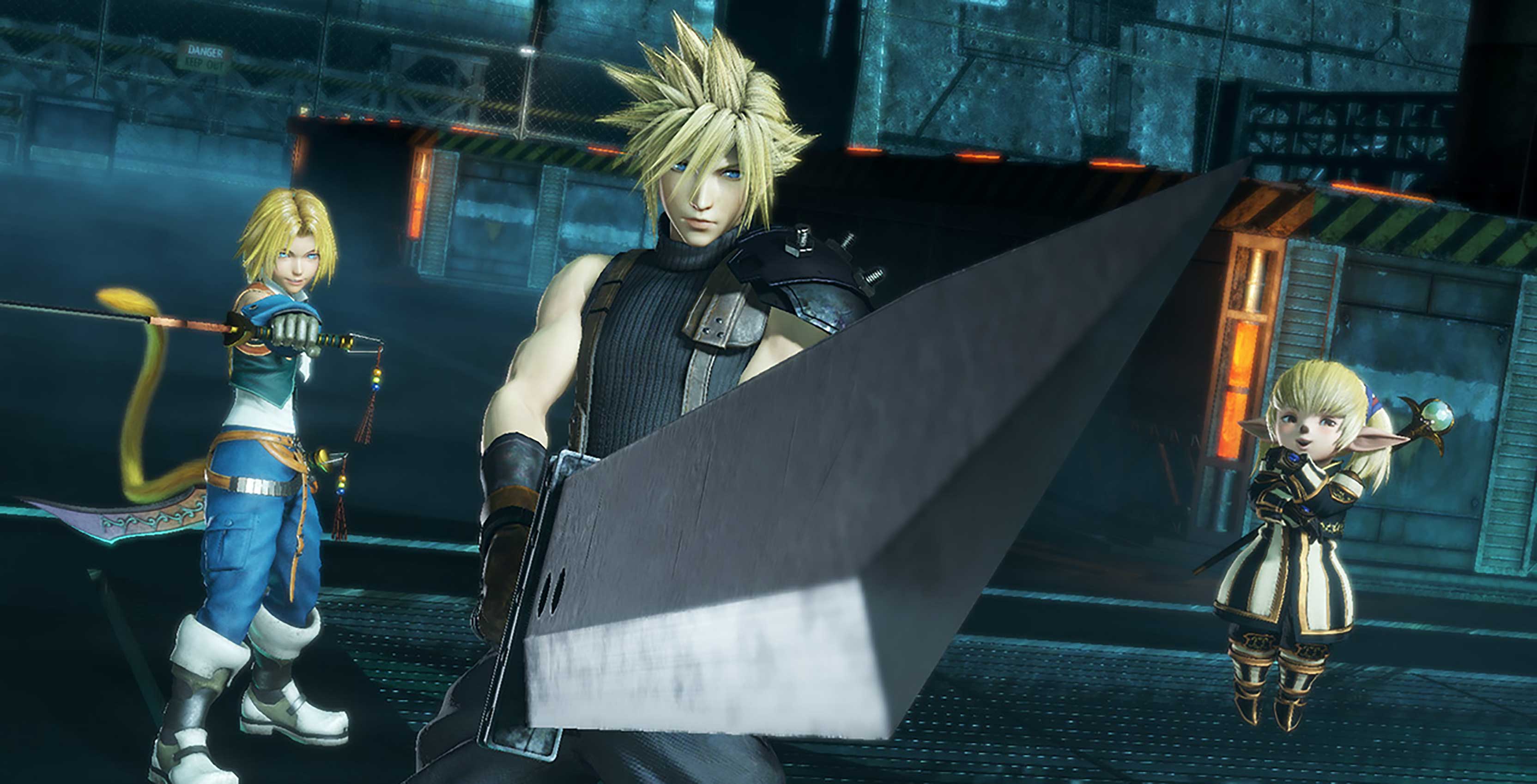
Dissidia Final Fantasy and Dissidia 012 Final Fantasy were two of the best games on the PlayStation Portable.
With a range of fan-favourite Final Fantasy characters like VI‘s Kefka, VII‘s Cloud and IX‘s Zidane, flashy combat and a surprising amount of new abilities and equipment to unlock, I found myself spending countless hours playing the two fighting games.
That’s why I was over the moon when Square Enix announced Dissidia Final Fantasy NT, an enhanced port of the 2015 Japan-only arcade game. Dissidia on the PS4? Count me in.
Unfortunately, Dissidia NT deviates a great deal from the original experience, and because of that, it only somewhat approaches the high bar set by its excellent predecessors.
Thrilling battles
To start, Dissidia NT eschews the more straightforward 1v1 battles from the first two titles in favour of frenetic 3v3 skirmishes.
As with the PSP games, Dissidia NT uses the unique numbers-based Bravery system. Above a standard health bar is a Bravery count, a number which rises as you carry out more Brave attacks. The higher your Bravery, the more health damage you can inflict with HP attacks. Depleting an opponent’s Bravery will cause a”Break,” giving you a large increase in your Bravery. Special EX skills can also be used to affect Bravery, HP and other stats, such as the party-buffing Mighty Strikes for greater damage or the Bravery-reducing Poisonga, all of which work well to encourage teamwork.
In addition to two generic EX skills, each fighter has a default ability that, in a great bit of fanservice, is character-unique move pulled right from the original games. Having Sephiroth use Final Fantasy VII‘s infamous Jenova cells to reduce another player’s Bravery or Noctis warp around the stage with his sword as he would in Final Fantasy XV was a particularly nice touch. All of these mechanics create battles that feel fast, fluid and engaging, especially whenever you successfully piggyback off of teammate’s attacks to create devastating team-based combos. Hearing dozens of classic Final Fantasy songs all the while makes fights even more thrilling.
To win a battle, you’ll need to defeat any one of your opponents three times. Another mode, known as Core Battle, has you protecting a Crystal-shaped object while trying to break your the opposing team’s. As a nice change of pace, you can also engage in 1v1 or 2v2 battles in offline modes.
Throughout all of this, you’ll be choosing from a roster that is quite diverse, with each character feeling very unique and interesting to use. That said, of the 28 playable characters, only four of them are actually new to the series — Final Fantasy XIV‘s Y’shtola, Final Fantasy XV‘s Noctis, Final Fantasy Type O-HD‘s Ace and the most exciting addition, Final Fantasy Tactics‘ Ramza.
While each new character brings something wonderfully fresh to the table, and the roster is set to increase with least six additional DLC fighters, it’s disappointing that more newcomers weren’t added to the base game — especially given how many compelling Final Fantasy characters they could have included.
Stymying summons
To further add to the sense of scale, Dissidia NT also lets you call forth powerful summon monsters taken from the various mainline Final Fantasy games, like Odin and Bahamut. However, while it was truly impressive at first to see such iconic creatures so beautifully rendered, I quickly dreaded whenever they would appear. Not only do they force you to sit through the same entry animations every single time they are summoned, but they also frustratingly disrupt the flow of combat.
That’s because to summon them, you’ll have to destroy crystalline Cores that occasionally spawn in random areas of a stage. This can result in battles suddenly shifting to every fighter dropping what they’re doing and making a break for the Core — an especially tedious development in larger maps that take longer to traverse, like the original Final Fantasy‘s Cornelia or Final Fantasy VII‘s Midgar.
Because the game is so cluttered with multiple characters and a garish and unwieldy UI, switching between targeting the Core and an enemy — or on the flip side, trying to see which fighter is targeting you in the midst of it all — can feel exceptionally clunky. Likewise, keeping up with the immensely powerful summons on top of the three enemies you were already fighting can feel like an encumbrance.
The story is entertaining, but short and muddled
It’s a good thing fighting in NT is, for the most part, quite a fun experience, because there’s not a lot of content outside of that. Perhaps most disappointing of all is how disjointedly NT handles its story mode. The campaign — which once again focuses on two warring gods summoning Final Fantasy heroes and villains to their side — is broken up into individual scenes that can only be unlocked with an in-game currency called Memoria. Therefore, the tale unfolds at a snail’s pace as you earn the requisite Memoria through offline and online battles.
In spite of this, the campaign can still be a great ride. Occasionally, you’ll also be able to participate in some battles, offering fun 3v3 and 2v2 match-ups between interesting choices of characters. Seeing Final Fantasy XI‘s cocky Shantotto exchange increasingly colourful insults with the equally haughty Ultimecia from Final Fantasy VIII is delightful, as is seeing newcomer Noctis fumble his way into new encounters.
The cutscenes also offer well-choreographed, flashy combat reminiscent of Final Fantasy VII: Advent Children, keeping me interested in getting to the next story mode battle to see more. NT has a lot of fun with the interactions of its characters, although I wish Ace and Ramza weren’t conspicuously absent from the story.
To mix things up, the campaign also features battles against every summon in the game, but unfortunately, their execution here is also deeply flawed. These enemies are significantly more powerful than the standard fighters, presenting ridiculous difficulty spikes throughout the campaign. With their massive size, large health count and overwhelmingly damaging ranged attacks, these foes are much more frustrating than they ought to be.
Minimal modes
Outside of the story, there are essentially only three other main modes — Tutorial, Online and Gauntlet, all of which are mixed bags. While Tutorial does a bang-up job of teaching you both basic and advanced combat techniques, it bafflingly lacks a move list for each character.
Similar confounding design choices can be found in the other two modes. Gauntlet is an Arcade Mode-lite series of battles of increasing difficulty, although as with the story campaign, there are rampant spikes in difficulty, particularly with an unforgiving three minute time limit. Far too often, I found myself managing to survive against a strong AI opponent, only to run out of time and immediately lose, as the game doesn’t take into consideration how many stocks you may have had over the enemy.
There is some good to come out of Gauntlet Mode, though. Outside of the experience the player fighter will receive, the two CPU-controlled party characters will also rank up as you continue to battle. Not only will this increase their fighting prowess, but it will also teach them new HP and EX abilities. Best of all, once these skills are learned, you can use them with those characters on your own going forward. It felt very rewarding and time-efficient to be able to develop characters like Ramza and Noctis on the side while I mained Cloud, knowing I would dabble with them more afterward.
Finally, the game’s Online mode suffers from a rather poor netcode at times. While this will likely be smoothed out going forward, it’s unfortunate to see that the multiplayer options are woefully limited, too. Unlike in offline modes, Online doesn’t let you fight in 1v1 or 2v2 permutations, nor does it let you engage in Core Battles.
Thankfully, throughout all of these modes, you’ll earn Gil (Final Fantasy‘s signature currency) to acquire new songs, player profile icons and costumes — many of which are based on beautiful art from legendary Final Fantasy illustrator Yoshitaka Amano. The game also features loot boxes containing randomized assortments of these goodies, although graciously, these are obtained solely through levelling up each character — no in-game purchases to be found.
The verdict
Not every fighting game nails the experience right out of the gate — see Street Fighter V‘s beleaguered launch and subsequent marked improvement over time. I’m hoping that the same will be true with Dissidia NT, as there’s an entertaining foundation here.
Strong mechanics and beautiful production values surrounding such a storied franchise means there’s a brilliant frame work on which Square Enix can continue to build upon. A more representative roster, additional modes and story content, as well as some tweaked enemy AI and summon balancing can go a long way towards making an adequate fighter into an excellent one.
Here’s hoping that this Dissidia fantasy isn’t the final one.
Dissidia Final Fantasy NT is now available exclusively on PlayStation 4. For more on NT‘s mobile companion game, Opera Omnia, check out my review here.
MobileSyrup may earn a commission from purchases made via our links, which helps fund the journalism we provide free on our website. These links do not influence our editorial content. Support us here.

